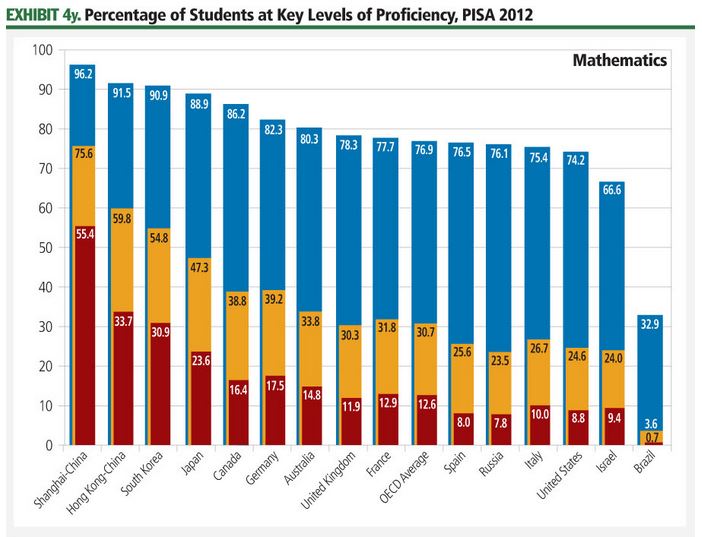Spain
2013 – Spanish Government Space Budget
The Instituto Nacional de Técnica Aeroespacial (INTA), the primary organization responsible for space activities in Spain, received appropriations from Spain’s national budget of €## million (US$## million) in 2013, a decrease of ##% over 2012 levels. INTA also receives revenue from its own commercial operations. Spain’s contribution to ESA is not funded through INTA, but through the Center for the Development of Industrial Technology (CDTI). In 2013, Spain’s ESA contribution was €## million (US$## million), a decrease of ##% from the 2012 ESA contribution.
2013 – Number of First-Degrees Awarded
The number of STEM first-degree (bachelor’s equivalent) graduates in many space-relevant countries has increased in recent years. The disciplines included here are physical, biological, and computer science; engineering; and mathematics.
2013 – Demographics
Science and engineering courses offered at the secondary school level are important for preparing students to pursue STEM degrees. Not only may students with more exposure be more likely to pursue a STEM degree upon reaching university, but research suggests that they are more likely to actually complete that degree.
2013 – PISA


Trends in international primary and secondary STEM education can be compared across countries using two widely respected international exams. The Programme for International Student Assessment (PISA), carried out by the Organisation for Economic Co-operation and Development (OECD) every three years, focuses on the capabilities of 15-year-old students in mathematics and science literacy.
2013 – European Space Industry Employment
Space employment in Europe has increased for the seventh year in a row, adding about ## employees from 2011 to 2012, an increase of ##%. European space employment is ##% greater than its 10-year low in 2005. Unlike the data for the U.S. space workforce, which is estimated using nationally collected data not specifically designed to capture the space industry, data on the European space workforce has been collected via a targeted survey of European space companies carried out by a not-for-profit organization, Eurospace. In carrying out this survey, Eurospace focuses on manufacturing activities and measuring end-market value.
Watch Your Late Train in Real-time
Noting that the complexity of tracking trains across an extensive national rail network is similar to that of monitoring and controlling a satellite in orbit, ESA contractor Elecnor Deimos envisaged a way to apply satellite tracking software to the Spanish rail system.
2012 – Land Imaging
Land imaging satellite performance is described using a variety of characteristics, including differences in spatial resolution (as measured by how many pixels compose an object), positional accuracies (as measured by the extent to which objects are represented accurately), and spectral capabilities (as measured by wavelengths of light captured, including visible and beyond-visible spectra). High-resolution land imaging satellites have resolutions below 1 meter (3 feet) per pixel, allowing users to distinguish cars from trucks, for example.
2012 – ESA: SSA
Europe is investing in a pan-European SSA capability through an ESA program that was initiated in 2009. Investment of €## million (US$## million) was initially requested for full-scale development, but ESA governments decided to spend only €## million (US$## million) over three years. So far, ESA has spent €## million (US$## million) on development. Some of that funding supported construction of ## prototype space surveillance radars. The first radar, located in Spain and built by Germany, was completed in October 2012 with validation and testing beginning in November.
2012 – Satellite Radio
Revenue for satellite radio broadcasting is estimated at $## billion in 2012, a ##% increase from $## billion in 2011. Sirius XM continues to be the sole revenue generator in this industry segment. In Europe, Madrid-based Ondas Media confirmed that it has temporarily abandoned its plan to launch its own radio broadcasting satellite due to Europe’s ongoing economic challenges. However, the company’s French affiliate, Onde Numérique, still plans to introduce its service in France by 2013.
2012 – Mexican Government Space Budget
In calendar year 2012, the government of Mexico allocated a budget of ## million pesos (US$# million) to the Agencia Espacial Mexicana (AEM). The agency was established by law in 2010 and commenced operations in late 2011, so 2012 was the first full year of activity. AEM is a young and growing agency, and its budget is expected to rise to ## million pesos (US$# million) in calendar year 2013.